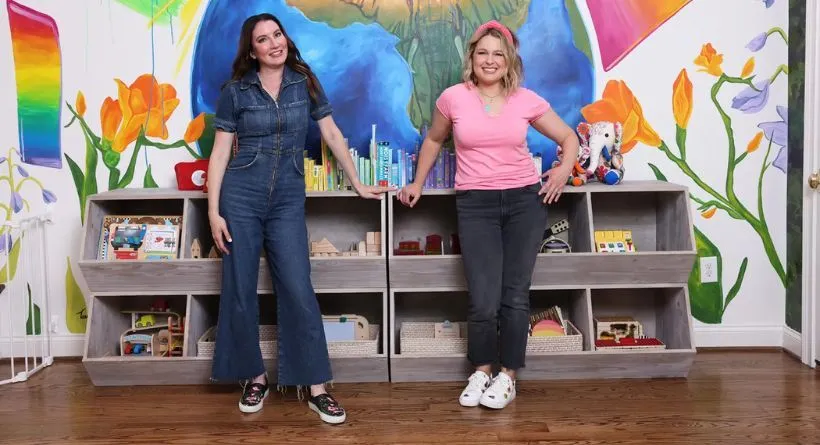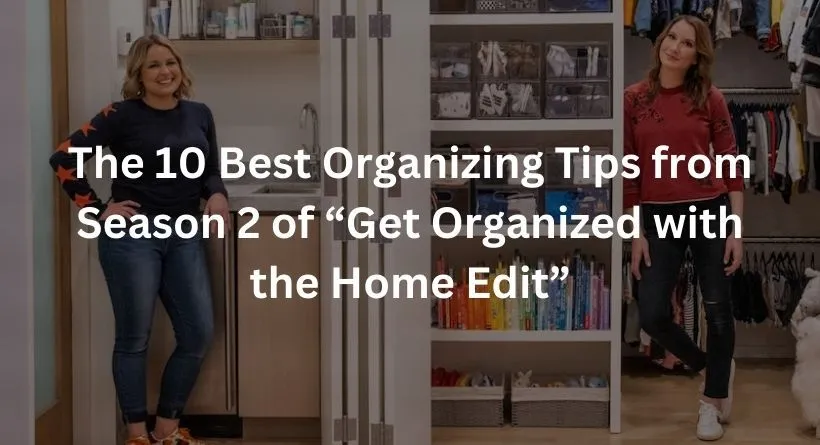Finally, the much-loved “Get Organized” Netflix series from The Home Edit is returning for a second season. Clear Shirer and Joanna Teplin, professional organizers based in Nashville, organize their way through the homes (and tour buses) of superstars and average people alike throughout eight episodes while offering some super-smart advice along the way.
Even while we strongly recommend that you watch the full season, if you just want the highlights, simply let us know. Here are the top 10 organizing ideas you may use in your environment.
1. Follow four steps in each project
If we’ve lelearnednything from Clear and Joanna, apart from the obvious beauty of organizing by colorists any home organization project requires the completion of four critical steps: edit, categories, contain, and maintain. Each step has its difficulties — choosing what to get rid of, for instance, may be excruciatingly difficult — but if you stick with the complete procedure, you’ll receive far better results.
2. be strategic about the stuff you want to use
It’s crucial to store items strategically if you’re a visual organizer so that you can access them often. In the first episode, Joanna and Clear purposefully stored infrequent pleasures on high shelves while placing healthy things, including veggies, in clear bins.
Finally, the much-loved “Get Organized” Netflix series from The Home Edit is returning for a second season. Clear Shirer and Joanna Teplin, professional organizers based in Nashville, organize their way through the homes (and tour buses) of superstars and average people alike throughout eight episodes while offering some super-smart advice along the way.
3. Determine your “fussy factor” before you start

The team asks their customers about their picky factor in the same episode, which is simply how precise they want the organizational structure to be. Consider if you would want to organize in broad or very detailed categories before beginning to organize your own space. For instance, you may separate markers, crayons, and paints or put all of a child’s painting tools in one container. Keep in mind: The objective is to develop a system you can sustain over time.
4. Create areas within rooms to suit your needs.
Every room has a variety of functions. Sometimes a kitchen is a meeting space, while other times a bedroom serves as an office. When organizing, embrace the personalities of the spaces you’re in and make them work for you. If you use your bedroom as an office, be sure to set up your bedside table with the necessary supplies, such as pens, paper pads, phone chargers, and other office supplies. If your kitchen also serves as a gathering place, consider setting up a spot where you have organized snacks on hand for guests.
5. Use racks instead of stacking
Nothing is more annoying than knocking a stack of pans over when looking for one in a cupboard. That’s exactly why Joanna and Clear decided to use a horizontal rack to house Drew’s pans, cutting boards, and lids. You don’t have to worry about creating a greater mess (or worse, injuring yourself) since everything is immediately apparent.
6. Create an incoming drop zone
Create a designated “drop zone” (January Cure participants will know it by the name of “landing strip”) that keeps mail, packages, and other incoming items contained until you can address them if you find yourself amassing piles of stuff in your home. You might not be getting free stuff all the time like supermodel Winnie Harlow, but if you do, you might find yourself collecting piles of stuff.
7. Use containers in high or deep spaces
Although up-high cabinets provide ideal space for keeping goods you use less often, it might be inconvenient to always need to get up on a step stool. Put these less often-used goods in a bucket or basket that you can quickly grab to avoid having to reach the back of the cabinet.
8. Store bigger items lower
Joanna and Clear provide a brilliant suggestion while they’re arranging Lauren Conrad’s space: always keep smaller objects (such as bins and baskets) close to the top shelves and bigger items on the lower shelf (or the floor). Not only does this technique provide a pyramidal aesthetic that is pleasing to the eye, but it also makes it simpler (and safer) to take large items from lower levels.
9. Donate edited items right away
Episode five will demonstrate that deciding to contribute money is not the same as really doing it. Make a plan to give or destroy goods you’ve edited out of your house as soon as possible rather than leaving them in your vehicle or placing them by the door to avoid clutter from accumulating in your area. By doing so, you’ll immediately make room for new goods, which is much required.
10. Create stations and zones
Although this advice is intended for a child’s playroom, it applies to any room: Whenever you organize, consider stations and zones. It is considerably simpler to identify and utilize objects and, more importantly, to manage your system when categories have designated locations. You’ll be far more inclined to put something away after you’re finished if you can easily remember where it belongs.
Conclusion
In conclusion, the second season of “Get Organized with the Home Edit” has brought us a wealth of invaluable organizing tips. From the kitchen to the closet, from the pantry to the garage, Clear and Joanna have showcased their expertise and transformed chaotic spaces into functional, beautiful areas. By following their guidance, you too can create an organized home that brings peace and simplicity to your everyday life.

